Creative Flow Research Division
Design of Structure and Flow in the Earth Laboratory
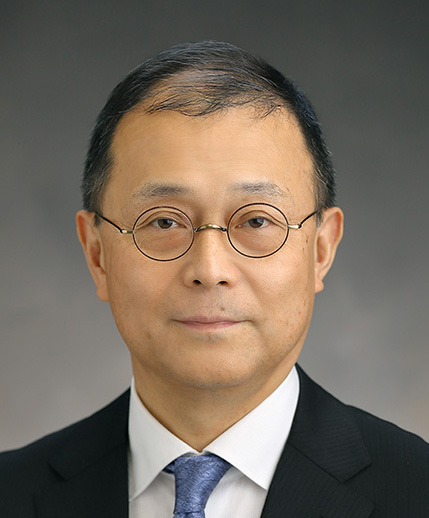
Concurrent ProfessorKaoru Maruta
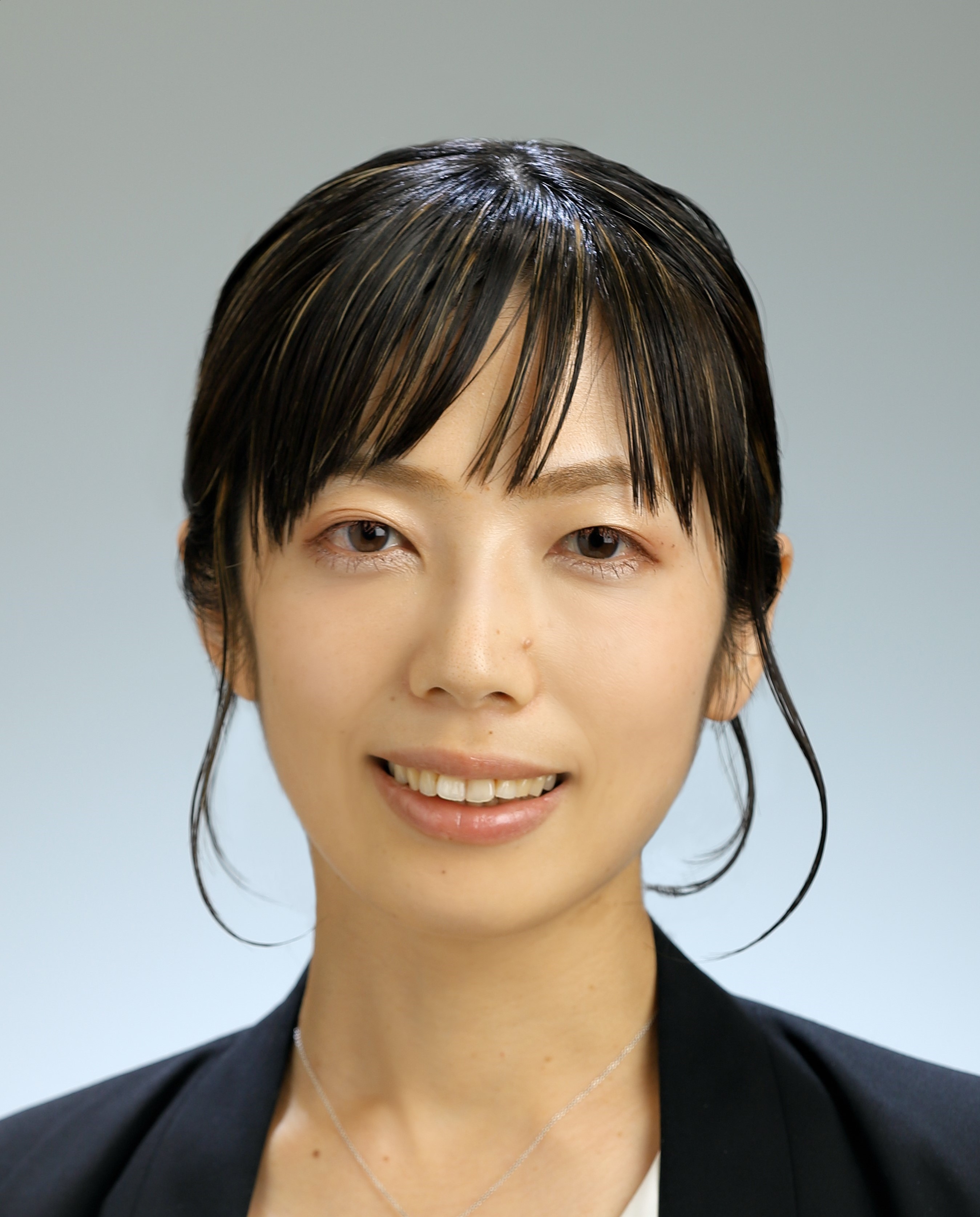
Associate ProfessorAnna Suzuki
The goal of our research is to build systems in which humans can live with nature sustainably. Subsurface rock formations play an important role in the energy system as a supply of geothermal energy, and as a disposal site for CO2 and radioactive waste. On the other hand, the rock structure is complex, and the utilization of subsurface resources should be designed in harmony with the natural fluid flow and stress conditions in the subsurface. In our research, we aim to design sustainable energy systems in harmony with the environment by understanding the natural “structure” and “flow”. In addition, we have been exploring how new science and technology can be utilized in society and what an environmentally harmonious society may look like. In this respect, our research considers the exchange of people’s ideas and opinions on energy systems, energy production and energy use.
Topological data analysis for rock structures and structure-controlled flow experiments
To capture the complex structure of rocks and other materials, we quantitatively extract important structural information related to flow using topological data analysis. In addition, by using 3D printers and microfabrication techniques, we create accurate structural models, which have controlled and known structures. The 3D models are designed to improve our understanding of fluid flow processes through a combination of lab experimentation and numerical simulation, enabling us to find new relationships between “structure” and “flow”. In addition, we are developing numerical simulation methods for describing development of new reservoirs using supercritical fluids and for understanding mechanisms controlling fracture formation under supercritical temperature conditions.
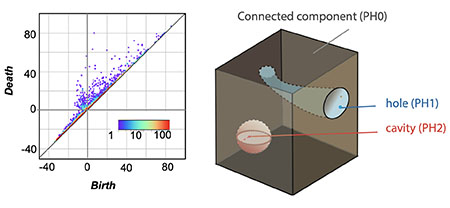 Quantification of structures by persistent homology analysis
Quantification of structures by persistent homology analysis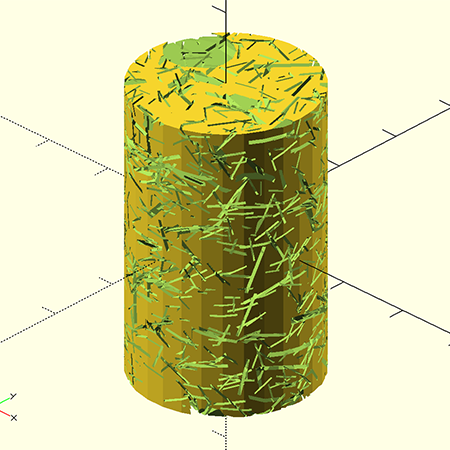 Design of fracture network
Design of fracture network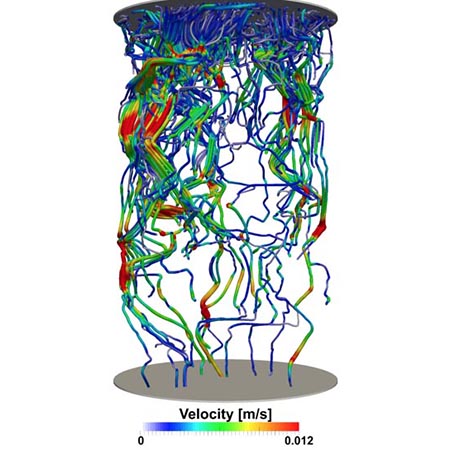 Direct flow simulation
Direct flow simulation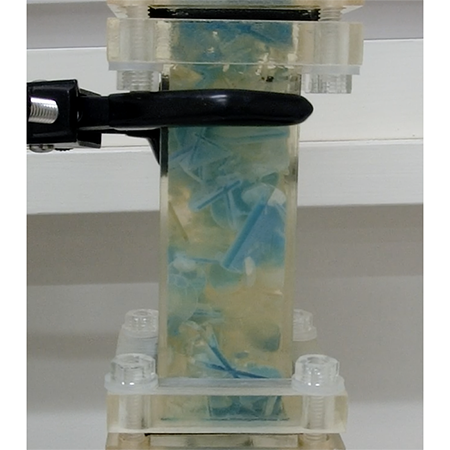 Flow experiment using a 3D-printed fracture network
Flow experiment using a 3D-printed fracture network
Design of sustainable geo-energy systems
Geothermal power generation can be carried out more sustainably by creating a recirculation operation in which water used for power generation is returned to the subsurface. The effectiveness of different recirculation strategies depends on the subsurface structure and flow connectivity between the wells that return fluid to the subsurface and the wells that produce hot geothermal fluid for power generation. In this study, we are developing methods for estimating the subsurface structure and well connectivity using results of tracer tests for flow evaluation and for optimally designing a sustainable water recirculation operation. This includes proposing new tracer testing methods using nano- and microparticles. Our optimization and estimation workflows incorporate tracer and thermal transport modeling, quantitative evaluation of uncertainty, model error estimation, and machine learning.
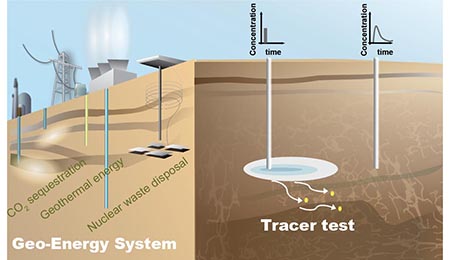 Tracer test in geo-energy systems
Tracer test in geo-energy systems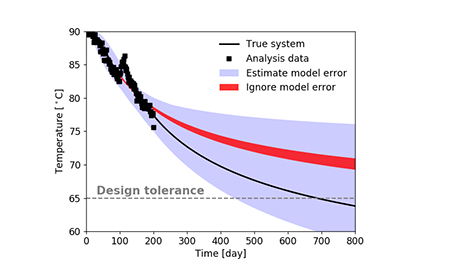 Uncertainty quantification
Uncertainty quantification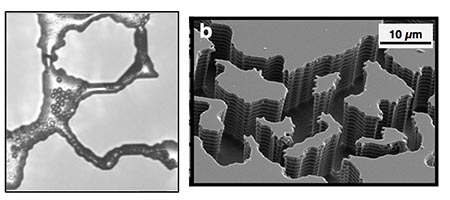 Flow experiment with particle tracers in rock structures
Flow experiment with particle tracers in rock structures
Optimization of resource utilization through dialogue and data visualization
change, it is necessary to optimize utilization of local resources in local communities. In this research, we propose new lifestyles for staying in hot-spring areas and prepare opportunities for people to change their consciousness and behavior toward the co-creation of resource utilization processes. We are also developing methods for visualizing public opinions and social acceptance to promote interaction within and outside local communities through questionnaire surveys and social media analysis.
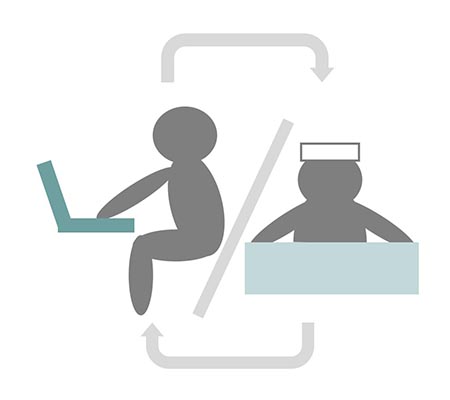 Proposal of a life style in onsen area
Proposal of a life style in onsen area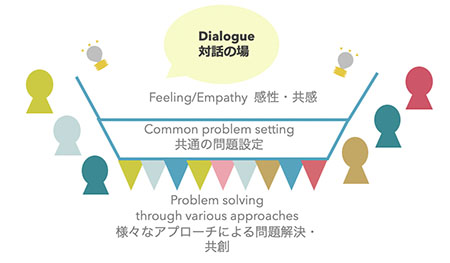 Dialogue toward co-creation
Dialogue toward co-creation Dialogue workshop for community building
Dialogue workshop for community building
